Lobbying for Healthy Homes & Sustainable Building Design


Lobbying for Healthy Homes & Sustainable Building Design
Quiet Mark celebrates its 10th anniversary this year. What started in January 2012, with a mission to restore the value of quiet back into society, has since grown into an invaluable resource, making it easier for consumers, architects and trade buyers to source the quietest products and building materials, to enhance wellbeing through reduced noise in our homes.
Our roots, however, stretch back far much further, to 1959, when John Connell OBE, the father and grandfather of Quiet Mark co-founders Gloria Elliott OBE, and Poppy Szkiler, CEO, established the Noise Abatement Society. Connell believed that exposure to excessive noise profoundly affects health, education, productivity and quality of life, calling noise the ‘forgotten pollutant’. John was instrumental in lobbying the Noise Abatement Act through parliament in 1960 when noise became a statutory nuisance for the first time in the UK.
In the 35th episode of the Quiet Mark Podcast, our first of 2022, we welcome Daniel Slade, Policy & Projects Manager at Town and Country Planning Association (TCPA), and Cat Hoad Director & Founder at Absolute Project Management & Founding Signatory of Interior Design Declares.
Too many homes and neighbourhoods built today undermine residents' health and wellbeing - the TCPA has developed new legislation, in the form of a Healthy Homes Bill, to stop this.
Where we live has profound effects on our health throughout our lives, both in terms of our short-term safety and long-term quality of life. Yet there is overwhelming evidence that too many new homes and neighbourhoods in England are seriously undermining residents' wellbeing and life chances. The way we regulate the built environment needs radical change. This campaign calls on the government to adopt the TCPA’s Healthy Homes Bill, which would require all new homes and neighbourhoods to be of decent quality, and effectively outlaw those which undermine residents’ health and wellbeing.
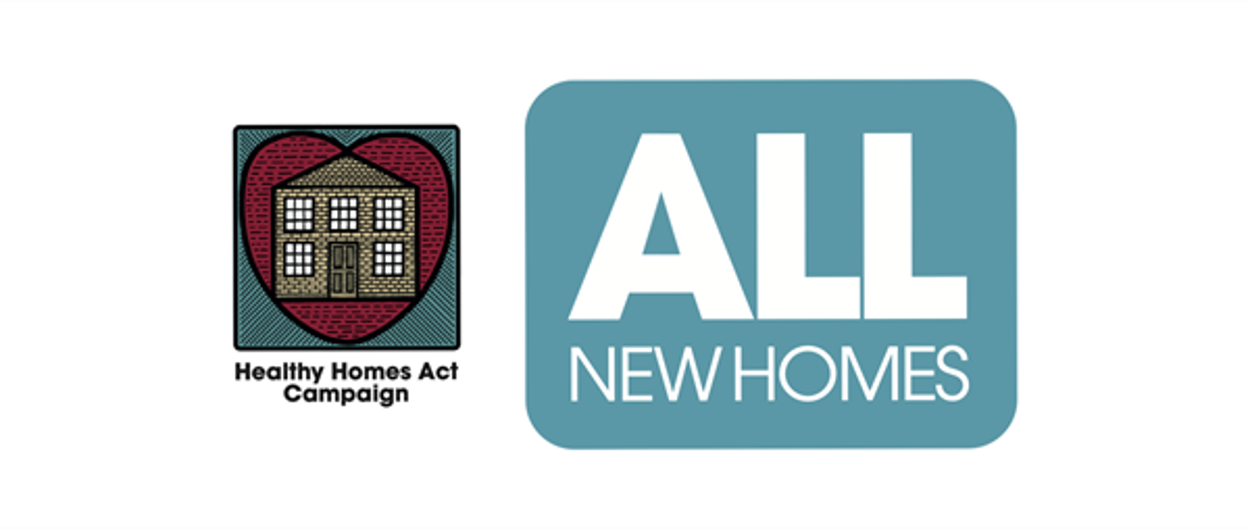
Interior Design Declares is one of several UK Declares pledges/ movements, under the Built Environment Declares body. BUILT ENVIRONMENT DECLARES is a global petition uniting all strands of construction and the built environment. It is both a public declaration of our planet’s environmental crises and a commitment to take positive action in response to climate breakdown and biodiversity collapse.
Built Environment Declares can be used by everyone involved in the sector: architects, designers, landscape architects, engineers, project managers, surveyors, developers and estate managers, contractors, suppliers, students, academics etc.
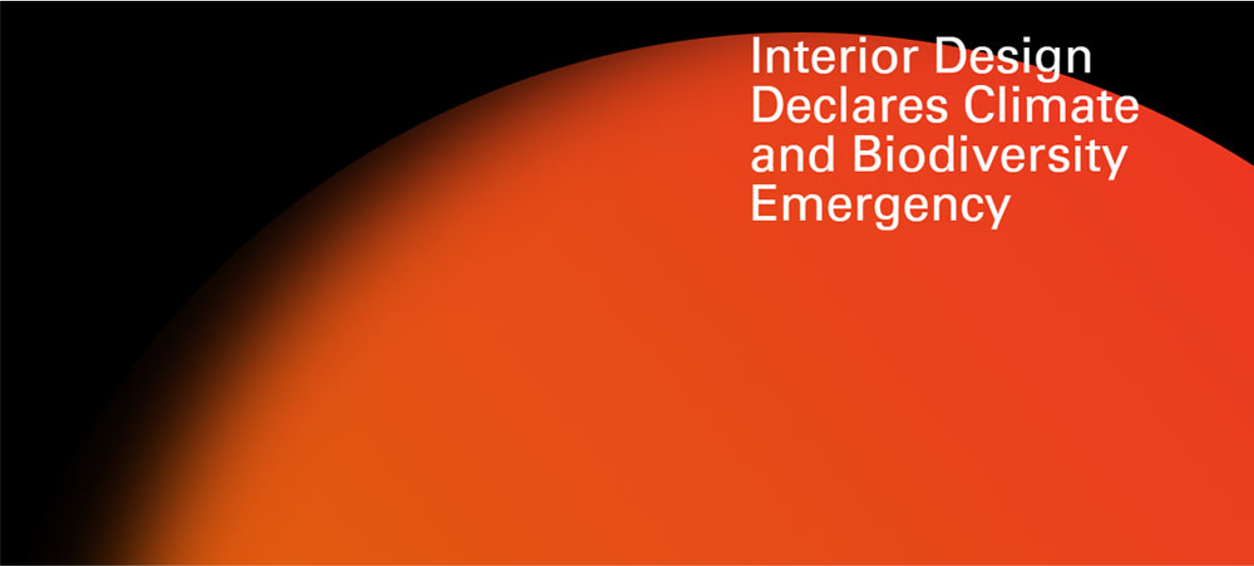
Since May 2019, over 1000 architectural practices in the UK have made a declaration of climate and biodiversity emergency, acknowledging the extreme seriousness of our situation and making a public commitment to positive change. They have been joined by Structural, Civil and Building Services Engineering practices, Landscape Architects, Contractors, Interior Designers, Suppliers and Project Managers in the UK and internationally, amounting to over 7000 practices worldwide.
We started our conversation by asking both Daniel and Cat whether they noticed a conflict between the government’s ‘New Deal’ commitment to ‘Build, Build, Build’ at a fast rate, potentially leading to cheap, unsustainable production and buildings that could potentially make us ill.
Daniel responded by telling us the origins of TCPA and some disconcerting similarities between the way homes were built in the Victorian era and today. “TCPA began around 1899, which was a pivotal point of social change. The industrial revolution was driving intense urbanisation and many people across Britain were deeply concerned about the human impact with people living in squalor. Today there are some worrying parallels with 1899. Through a lack of regulation and resourcing, modern ‘slums’ are being built.” We can look to the Grenfell tragedy as an example. “This is where our Healthy Homes Act Campaign emerges - showcasing the need to install minimum standards for construction so that we don’t construct inhumane homes for people.”
“The key here is to not deliver more homes by sacrificing quality. The way this is framed in the media and the world of think-tanks, is that the only way to deliver more homes - through the private or public sector - is to reduce standards and burn regulations and get to a point where they can be delivered cheaply and in bulk. This is a false dichotomy. We have seen in the past that we indeed can deliver large numbers of housing to a high standard and not sacrifice our principals. Removing regulations around quality and health results in extreme health impacts which the healthcare system is left to clean up. The same goes for the poor long term effects on carbon emissions and the environment in general.”
Cat agreed entirely. “The problem of short-termism, driven by politics, is nearly always a bad idea. With some clients we work with, most people prioritise quick deadlines but we stress that people give deep thought to how they want their spaces to be rather than make speedy decisions. This is particularly true when it comes to choosing sustainable options. If a building is constructed quickly, and without thought, it simply won’t last and will have to be redone, which in itself is unsustainable, not to mention the health impacts.”
As a solution to this issue, both Cat and Daniel’s work drives them to lobby for new and more advanced standards which mean that health and sustainability cannot be dismissed. “We need to change the regulatory standards to avoid this race to the bottom. Instead the regulatory system should reward firms that pursue higher standards. The way the regulation of the current building environment functions is that it's about mitigating the worst health impacts. A building goes through several processes and they take the edges off the worst excesses be it noise or climate rather than the active pursuit of health and wellbeing which is needed.”
Interestingly, Cat spoke on an existing paradox within the current standard which she hopes will dissolve. Currently, while her team may present interior design clients with the most sustainable option, it can nevertheless be more expensive. Clients can be put off, instead opting for less expensive and sustainable products and materials. Our Podcast Host, Simon Gosling, asked whether the goal is to get to a stage where only the sustainable option can be presented and any unsustainable options left off the table. “In reality and where we are as a profession, it has to be approached from various angles, so ideally there are standards below which people can’t specify - like using very high VOC paints. We hope to educate clients on the options and eventually only provide sustainable materials. In many ways we are doing that already but it needs to be regulated, plus in certain ways it's an economic question”.
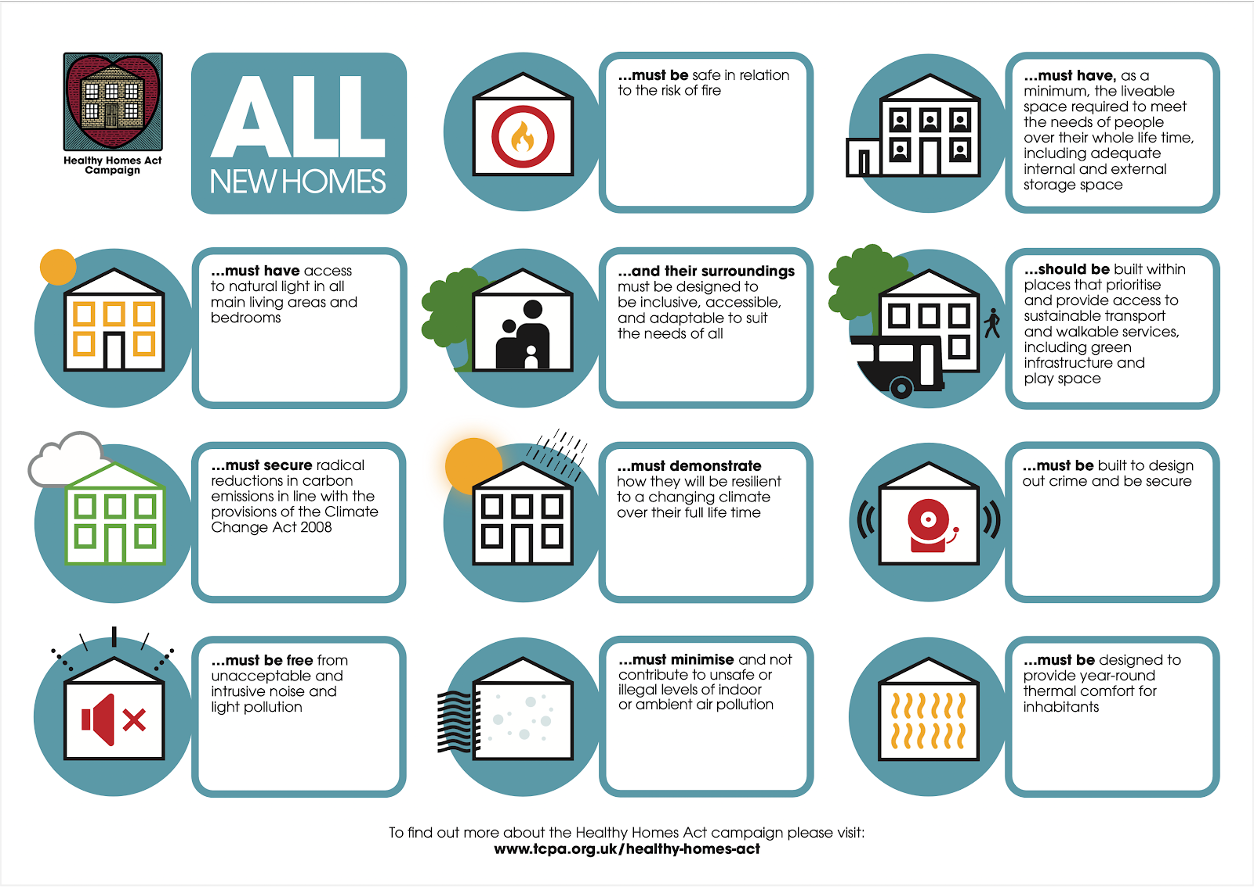
A helpful infographic explaining TCPA’s Healthy Homes Principles
Daniel unpacked TCPA’s Healthy Home Principles as an example of moving towards a more sustainable standard. “We developed the Healthy Home Principles to try to encapsulate what we mean by a truly healthy home. They’re almost a biological standard for homes to support health and wellbeing. The principles are high level common sense and we would argue the public would assume they are embedded in policy and legislation - take access to natural light and green space nearby - but ironically they are not guaranteed anywhere in policy or legislation. A lot of the regulation of quality of new homes comes through building standards but the issue with that is that it doesn't reach the wider level - a home’s location and its connectability to its environment and how this affects resident’s wellbeing.”
Here at Quiet Mark, we have a retail partnership with John Lewis who recently informed us that they are seeing over 10,000 ‘Quiet Mark’ searches per month, with more buyers making use of the filter for Quiet Mark products, in the left hand navigation menu on their site. We asked Cat what resources are out there platform wise which enable Interior Designers to specify quiet products. “The issue is that currently there isn’t a way to filter for products on the basis of what is sustainable, much less what is sustainable and quiet. We are having to work things out for ourselves. It is for this reason that we are working towards having resources on our website for exactly that purpose. The BIID sustainable specifying guide is working towards expanding directories of those products too.”
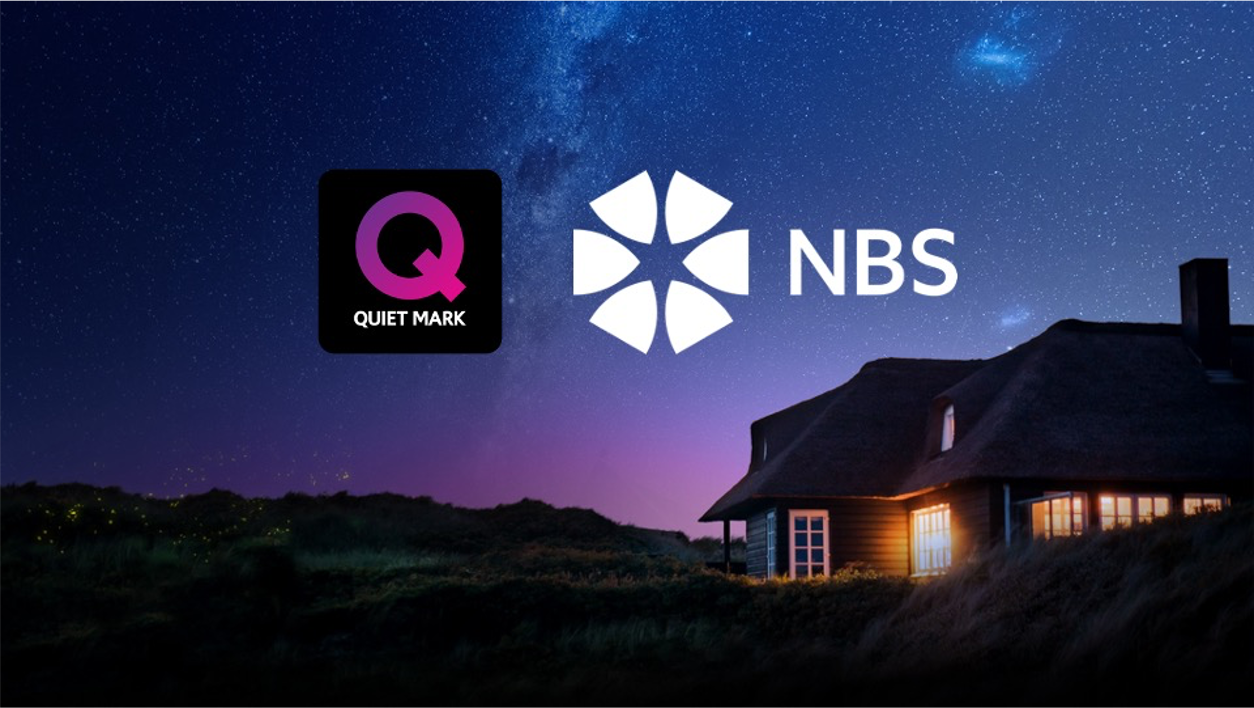
Since we spoke to Cat and Daniel in Autumn 2021 we received exciting news. We have announced a new strategic partnership to prioritise wellbeing in buildings through noise reduction with NBS, the leading construction data and specification platform. Every day, over 3600 practises, which includes 89% of Architects Journal’s Top 100, use it to make 13.6 million specification decisions monthly. Quiet Mark has joined forces with NBS to make it easier for those specifiers to source acoustic products. So now, when they go to the NBS platform they can use the left hand navigation menu filter for Quiet Mark certified materials. In addition, NBS offers a great amount of information and webinars on how to specify more sustainably.
To conclude our episode, we asked both Cat and Daniel how close they feel they are to achieving the change they lobby for.
“Anyone who's been involved in lobbying in Westminster knows it's an uphill battle which makes John Connell and The Noise Abatement Society’s achievements even more impressive”, Daniel expressed. “I think we are a long way from fundamentally changing the way we approach building. It requires a change in ethics and the way we think about quality of life in this country. I think we will open up a great space for debate in parliament for these issues. As ever, securing legislative changes is extremely difficult. We are at the beginning of a long journey. These issues of health and wellbeing are so intrinsically personal which makes them hard to argue against. The journey will be interesting.”
Cat agreed and ended our episode on a beautifully optimistic note. “The foothills are within sight but there are big mountains ahead. I’m nevertheless reassured by the awareness of the environment and the huge importance of improving how we interact with it. There are masses to be done and that will always be the case with wellbeing and building sense, but it’s encouraging to see many people, in all walks of life, so enthusiastic to talk about it.”
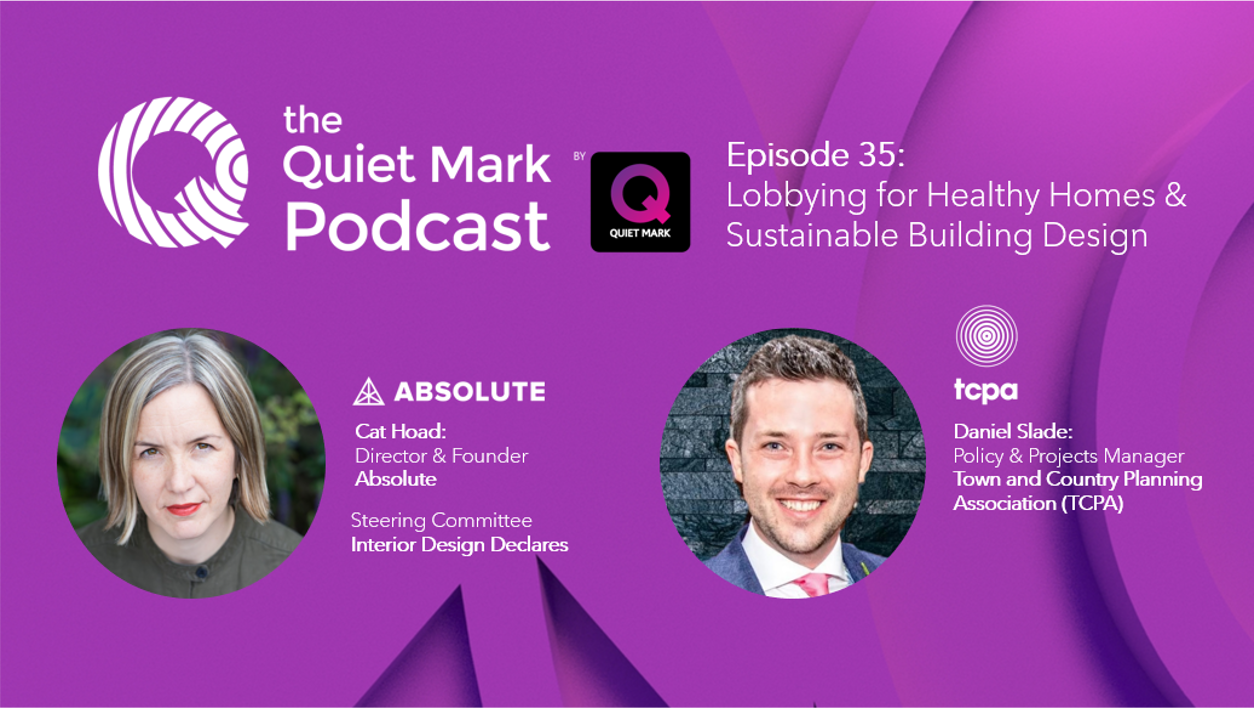
Listen to Cat Hoad and Daniel Slade on The Quiet Mark Podcast, HERE
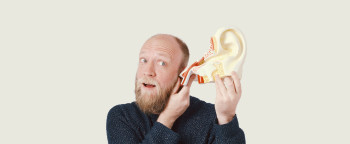
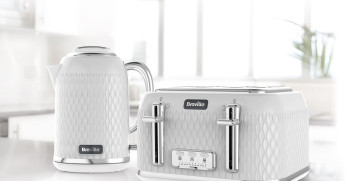
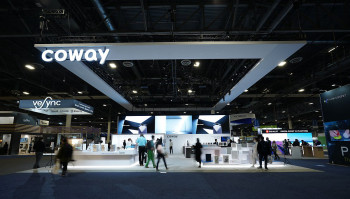
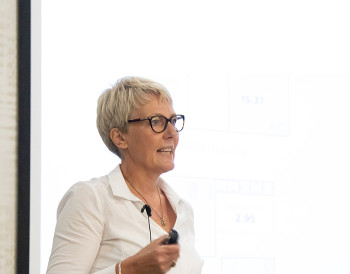
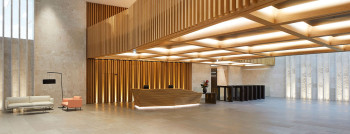

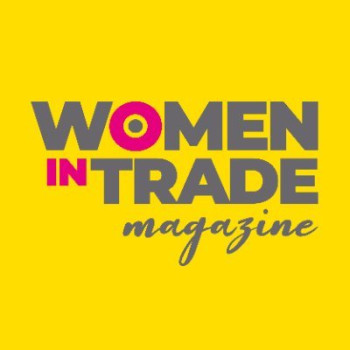





 Quiet Mark Founder
Quiet Mark Founder